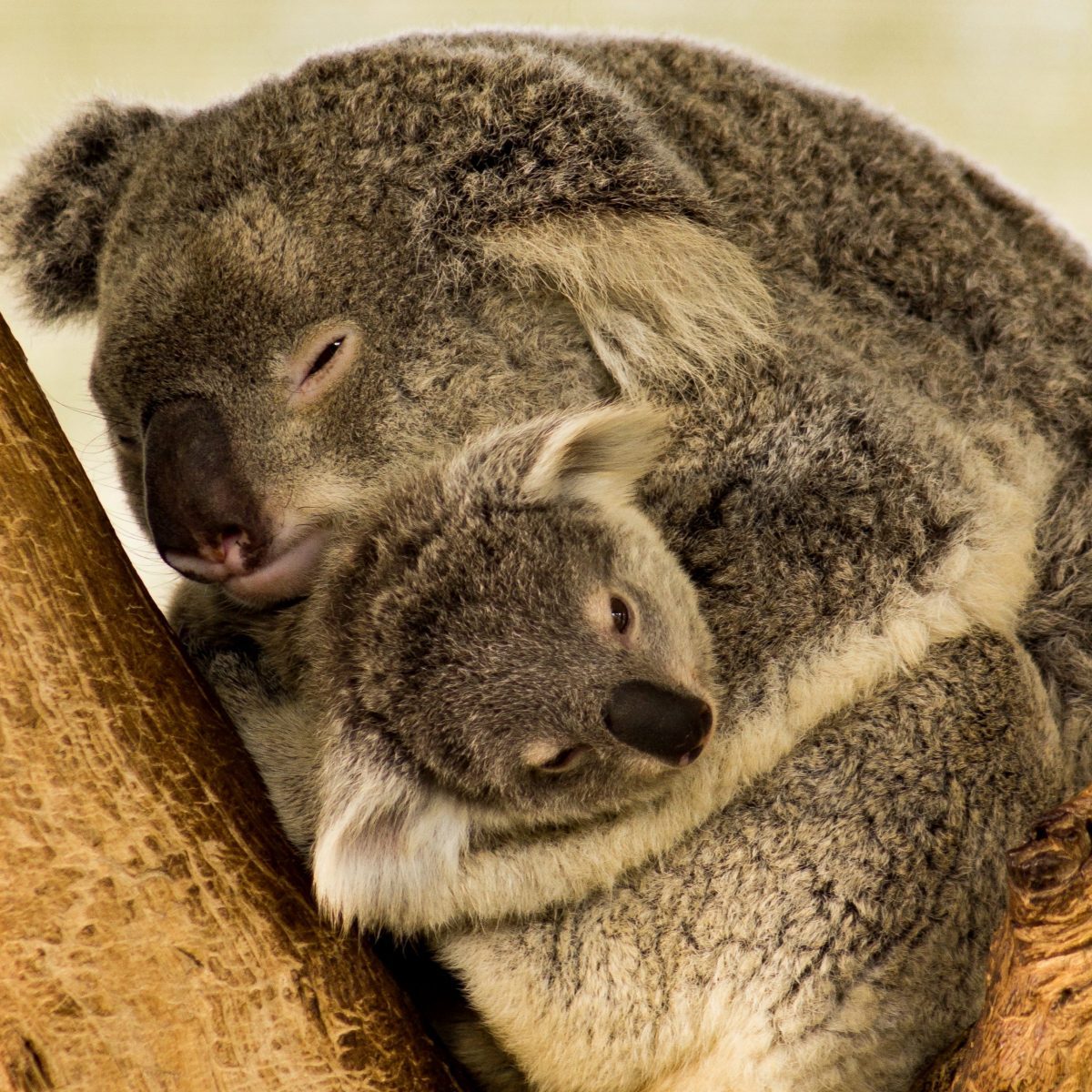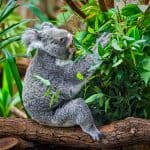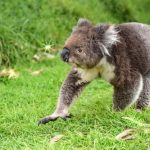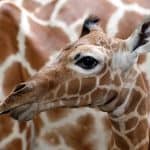Yes, much like kangaroos, koalas also have pouches for carrying their young. Female koalas carry their young in pouches for a few months after birth.
Koalas may be found throughout the eastern part of the country. The softness and cuddliness of koalas make them seem like teddy bears.
They’re not bears, however. They’re marsupials, and their distinctive characteristic is the pouches in their stomachs, where their young spend the first several months after birth.
Weird fact: Unlike other mammals, the pouch of the koala opens backward, toward the animal’s rear legs, rather than forward, toward the top of its head.
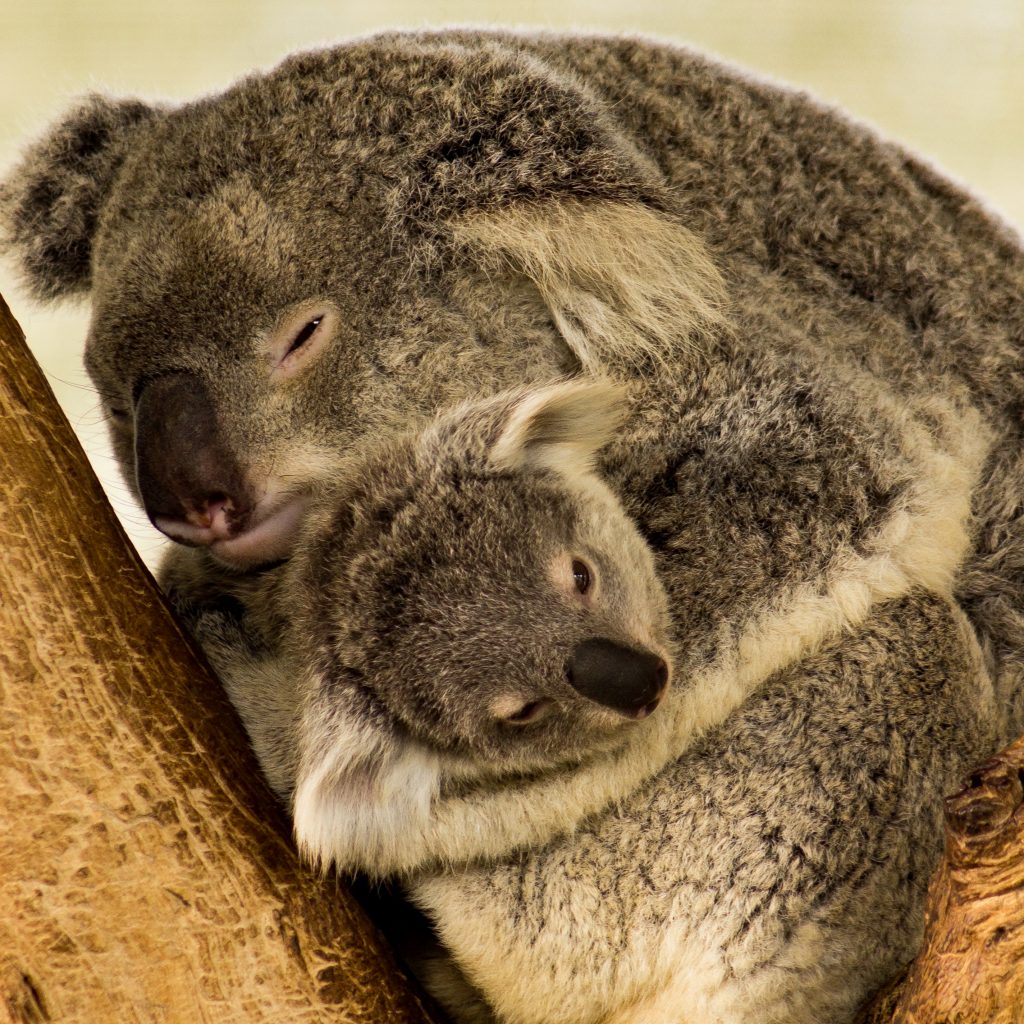
What is The Direction of Koalas Pouches? (Why Backward?)
Kangaroos and other marsupials have their pouches oriented upright, as do most of their bodies. If the young ones turn their heads toward the sky, mother and child will be facing each other in the same direction.
Other marsupials, such as the wombat and the koala, have pouches that face backward. The pouches of wombats face their hind legs because mud flying backward might quickly fill a pouch facing forward. Wombat-like koalas are not diggers, although they are closely related to them.
Despite their unusual appearances, marsupial pouches that face backward offer many advantages.
The koala’s pouches, which face backward, protect their young better than the kangaroo’s, which face forward. A koala’s primary habitat is a tree, where they spend most of their time. They may have been searching for food by leaping from tree to tree. If koalas had their pouches exposed, they might be at risk of engaging in such risky activities.
What are Special Muscles on Koalas Pouches?
You may ask, “How do koalas keep their infants from falling out of their pouches?” Their upside-down pouches are compensated for by a special muscle that sits on top of the pouch entrance.
Koala pouches have special sphincter muscles at the opening to keep their young safe.
A mother koala pulls this muscle like a drawstring as she makes her way through the treetops, thus closing the opening.
In other marsupials, muscles that resemble the ones employed to keep the infant in do exist, but they aren’t specifically intended to do so.
These aid in keeping their young warm by sealing their mother’s pouch when the temperature is cold outside.
Are Baby Koalas Called Joey?
Joey is the name given to a newborn koala. However, joeys are not just referred to as koala newborns. The phrase refers to the offspring of all marsupials, from kangaroos and possums to wombats and sugar gliders.
How Long Are Koalas Pregnant?
After a 35-day pregnancy, a mother koala gives birth to a joey.
Joeys are just 2 inches long and weigh about half a game when they are born. A joey may stay in its mother’s pouch for up to six months.
Because of the size of their mother’s pouch, it is probable that a joey will no longer fit.
If this is the case, the youngster will consume leaves while riding on its mother’s back.
The joey is fully weaned at 12 months of age.
Male koalas become sexually active between the ages of 3 and 4 years.
Females, on the other hand, initiate sexual activity at the age of two.
An adult koala female gives birth to a young one year after year.
A koala’s lifetime ranges from 10 to 15 years.
Koalas reproduce from February to August, which is the typical timeframe for the animal’s mating season.
There is a lot of koala activity during the mating season. During the mating season, the previous joeys had to leave their mothers and disperse.
However, if the mother does not get pregnant, the joey may remain. According to research, babies who stay with their mothers have less chance of surviving than those who are separated.
How Long Baby Koala Hold Onto Pouches?
The mother koala is not solely responsible for the well-being of her kids. The kids are also involved in the work. Without the mother’s guidance, a joey must find its way to the pouch after birth.
A baby koala does his or her job by staying in his or her mother’s pouch as long as possible. They use their forearms to crawl down the birth canal and into the pouch, which is about 3/4 of an inch long.
They use their natural instincts and acute senses of touch and scent to find their mothers’ pouches. He’s doing all he can to hold on to her fur as tightly as he can in the sack.
In response, their moms’ breast milk dries up quickly, and the joeys go for one of their mothers’ teats. Additionally, a teat aids neonates until they are mature enough to leave their pouch.
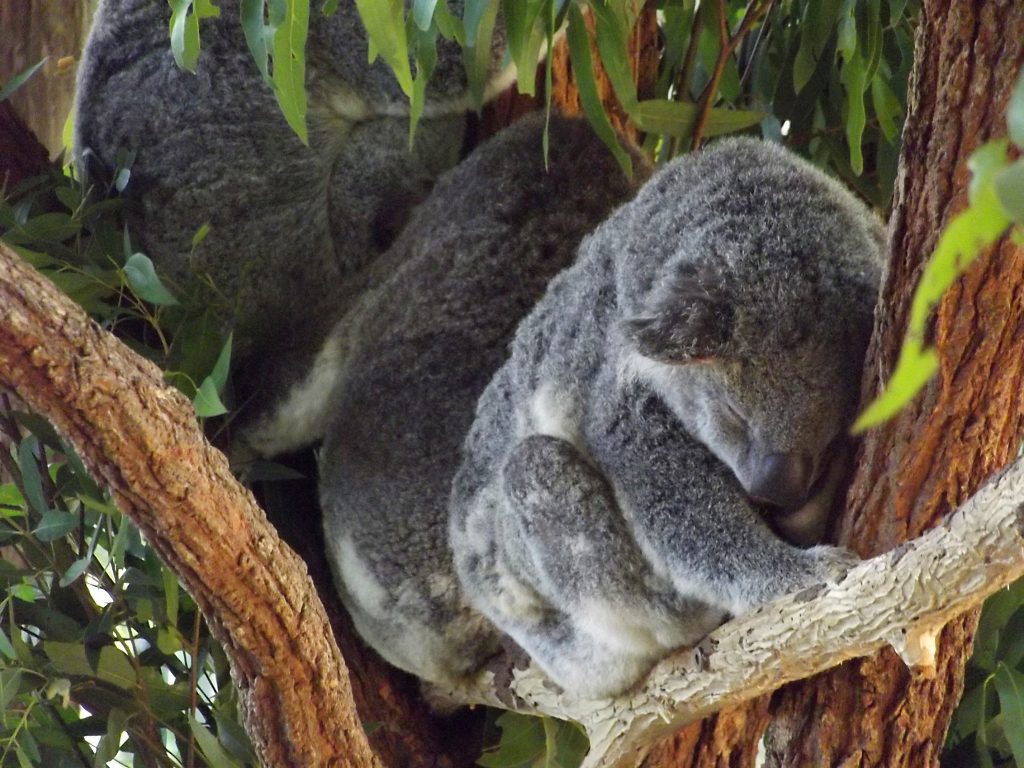
How Does a Baby Koala Get Out of a Pouch?
Babies in koala pouches remain in them for the first 22 weeks of life.
Till then, their eyes remain shut and their fur is still developing on their snouts. They thrust their heads out of the pouches as soon as their eyes opened to see what was going on.
A young koala returns to the pouch at 30 weeks of age just to sleep and eat, spending most of his time on his mother’s belly or back while she introduces him to tree life.
Most koala babies learn to eat on their own at about 36 weeks of age and do not return to the pouch, although they continue to nurse. For the first 12 months of their lives, infants are cared for by their mothers.
Can Skunks Be Kept Away from Yards with Koala Pouches?
Keeping skunks away from your yard can be a challenge, but can koala pouches really help? While koalas are native to Australia, their scent glands have a strong musky odor that could potentially deter skunks. However, there is no scientific evidence to support the effectiveness of using koala pouches for skunk control. Other proven methods such as removing food sources, sealing off potential den sites, and using motion-activated sprinklers may be more reliable in preventing skunks from invading your yard.
Can Koalas Also Eat While Carrying Their Young in Their Pouches?
Yes, koalas can eat while carrying their young in their pouches. However, they must be careful not to disturb the young joeys. Koalas have a specialized digestive system that allows them to feed on eucalyptus leaves, even though they are toxic to most animals, thanks to a unique bacteria in their guts. No, it’s not like snakes breathing while eating.
Koalas Joeys Life after Leaving Mothers
At roughly 12 months of age, the joeys leave their moms to establish their own home ranges. The infants had grown accustomed to being close to their mothers, and now they had to leave.
Life gets a little more difficult for them at this point, as they must create their own territory.
The koala joeys begin searching for a new home. They choose an area where there are plenty of mouthwatering eucalyptus leaves to work with.
In order to avoid the dangers of habitat loss, they must choose a place that is not at risk.

